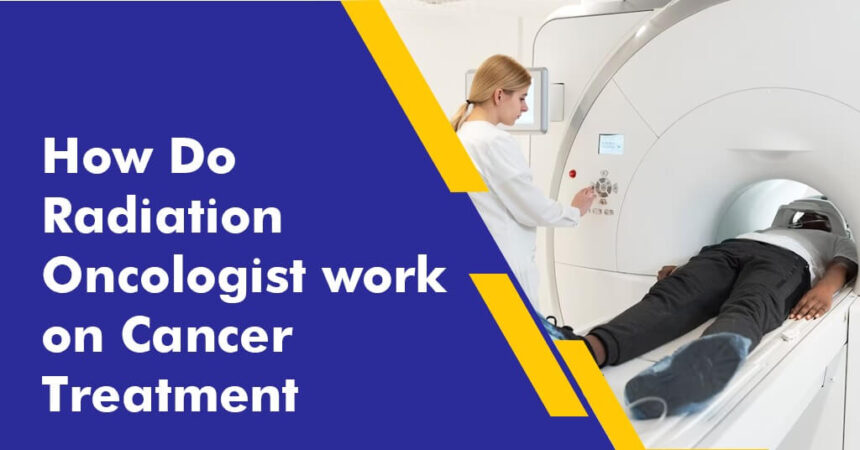What is Radiation Oncology?
Radiation oncology is a medical speciality that is essential to a multidisciplinary approach to cancer treatment. It employs high-energy x-rays, which are typically delivered via a linear accelerator. These therapeutic x-rays are painless and invisible, and they are useful to treat a variety of cancers. The treatment may aim to cure you of cancer, control its growth, or alleviate cancer symptoms such as pain. Chemotherapy, immunotherapy, and targeted therapy are just a few drugs that medical oncologists employ to treat cancer. Radiation oncologists use radiation therapy for cancer treatment, which involves using high-energy x-rays or other particles to destroy cancer cell
Why do people with cancer need radiation therapy?
Most types of radiation therapy do not reach all body parts, making them ineffective for treating cancer that spreads throughout the body. Nonetheless, radiation therapy can be used alone or in combination with other treatments to treat a wide range of cancers. The following are some of the major goals of radiation oncology.
⦁ To treat or remove early-stage cancer: Radiation can be used alone in such cases for shrinking or eliminating the cancer. Chemotherapy or other anti-cancer medications may be administered first in some cases. Radiation may be used before surgery to remove the tumour or post surgery to help keep cancer from returning. Radiation may be the preferred treatment for certain cancers that can be cured by radiation or surgery. Radiation, chemotherapy, or other anti-cancer drugs, may be used together to treat some types of cancer. Certain drugs improve the effectiveness of radiation therapy by increasing the sensitivity of cancer cells to radiation.
⦁ Prevent cancer to arise again: Cancer can spread to other body parts from where it began. Doctors frequently assume that a few cancer cells have spread even if they cannot be seen on imaging scans such as CT scans or MRIs. In some cases, the area where cancer most commonly spreads can be treated with radiation to kill any cancer cells before they grow into tumours. Radiation to prevent future cancer can sometimes be given at the same time as radiation to treat existing cancer, especially if the area where cancer may spread is close to the tumour itself.
⦁ Treat symptoms of Advanced cancer: Sometimes, cancer has spread too far to be cured. However, some of these tumours can still be treated to make them smaller so that the person can feel better. Radiation therapy may help relieve symptoms of advanced cancer, like pain, difficulty breathing or swallowing, or blockages in bowel.
How much does radiation oncology costs?
According to the region, cancer stage, and facilities, the average cost of radiotherapy in India is between Rs. 60,000 ($772) and Rs. 2,25,000 ($2895) each session. The cost of radiotherapy in India is slightly more than the average radiation therapy cost per session for some highly accurate, sophisticated procedures like IGRT and IMRT. Accordingly, the total cost of radiation therapy in India may amount to 20,00,000 ($28,981), depending on your suggested radiation technique. However, depending on a few different criteria, radiation therapy may cost more or less in India:
⦁ Entrance fee
⦁ Oncologist payment
⦁ the patient’s age
⦁ The body part that will be treated
⦁ The patient’s state of health
⦁ The type of radiation therapy that will be administered
⦁ There are postoperative complications.
⦁ Hospital type
⦁ The seating area you selected for admission.
⦁ Any other laboratory or examination testing, including X-rays, ECGs, etc.
Risks involved in radiation oncology
Local treatment is what radiation therapy is known as. This indicates that it solely affects the specific part of our body. For instance, scalp radiation therapy may result in hair loss. However, those who receive radiation therapy to other body regions typically do not lose the hair on their heads. Radiation therapy frequently causes the following physical negative effects:
⦁ Skin changes: Dryness, stinging, blistering, or peeling can occur in certain radiation therapy patients. Various factors, including the area of the specific body that got radiation therapy, can affect these side effects. After treatment, skin abnormalities brought on by radiation therapy typically go away several weeks after treatment stops. Your doctor could alter your treatment strategy if skin damage worsens. Skin changes may benefit from lotion, but be sure to ask your nurse or other medical staff members which cream they suggest using and when to apply it. Additionally, it is best to shield exposed skin from the sun.
⦁ Fatigue: The word “fatigue” refers to the practically constant feeling of exhaustion or fatigue. Patients often feel worn out. The course of your treatment will frequently affect how tired you are. For instance, radiation therapy followed by chemotherapy may lead to increased weariness.
⦁ Long-term side effects: Most adverse effects disappear with therapy. Some, however, carry on, return, or develop in the future. We refer to these as long-term or late impacts. Second cancer growth is one potential late consequence. This new form of cancer appears due to the initial cancer treatment. This late effect carries minimal risk. Additionally, treating primary cancer often has a lower risk than benefit.
Conclusion
In India’s medical community, radiation oncology is growing in popularity. Technology advancements and conclusions are drawn from cancer research have made it evident that radiation can have therapeutic capabilities in treating cancer patients. In the above blog, we have seen the details about radiation oncology and how it helps in cancer therapy and briefly discussed the costs and risks involved in doing it

